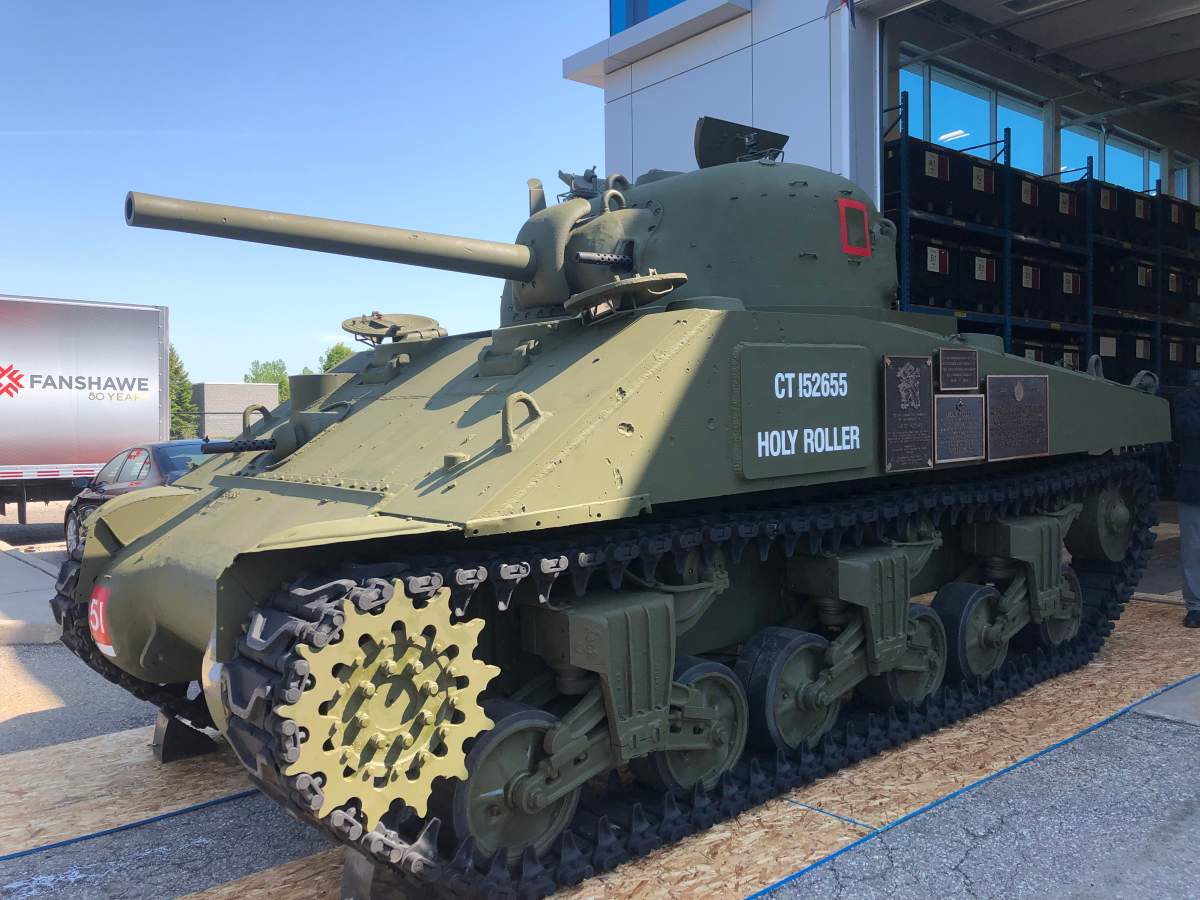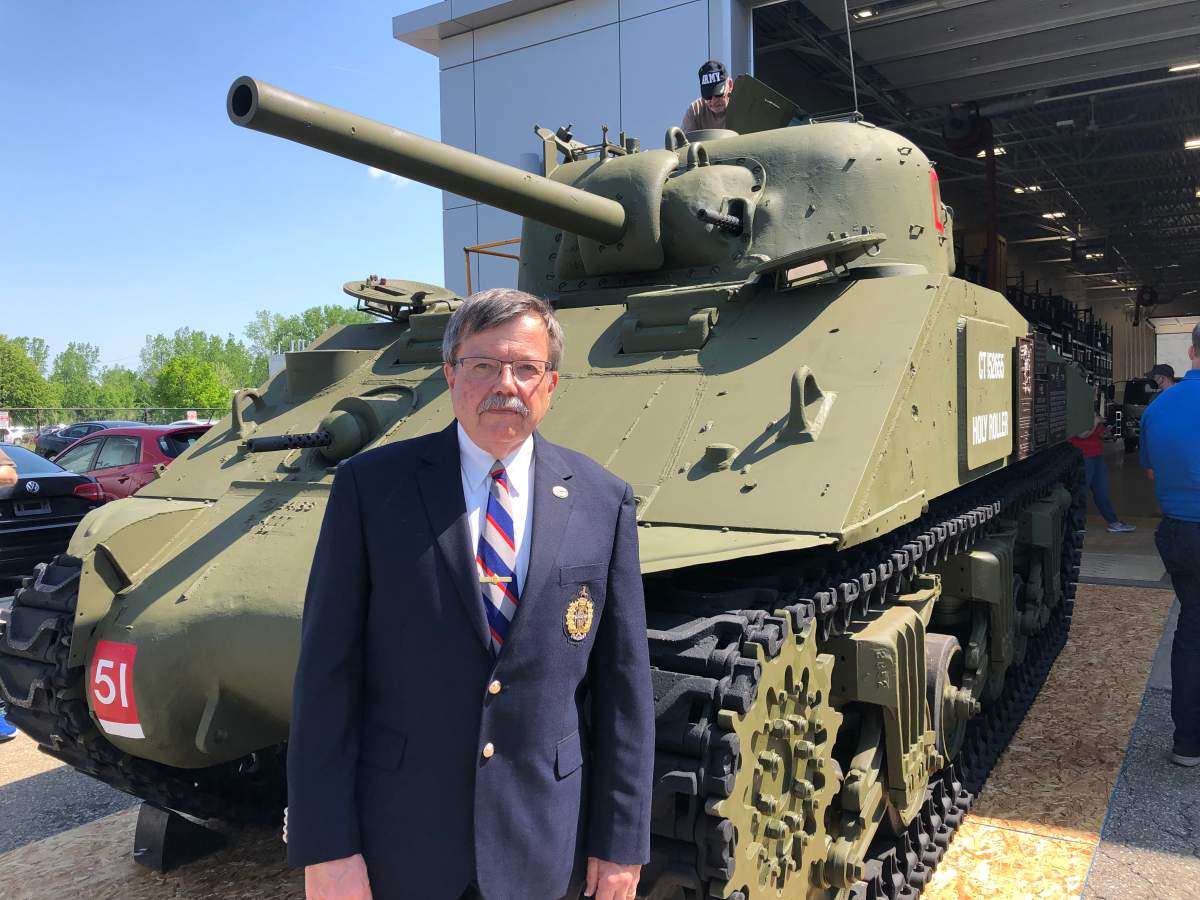For the first time since the late 1940s, the Holy Roller roared once more as officials in London, Ont., unveiled the result of a year-long restoration project on Monday.

On D-Day, June 6, 1944, the Canadian Armed Forces Sherman tank landed with London’s 1st Hussars regiment on Juno Beach.
The tank would go on to participate in 14 major battles during the Second World War, having fought until VE Day. Currently, it is one of only two Canadian tanks still surviving after taking part in D-Day.
In 2017, the tank was opened for the first time in decades and was found to be rusting from the inside out. A technical inspection would later reveal an urgent need for repair, with the tank’s hull expected to collapse in less than 10 years were it not for the restoration.
In June 2021, the Holy Roller was moved from its home in Victoria Park, where it had stood guard since 1956, to Fanshawe College’s Centre for Applied Transportation Technologies.
That’s when the Holy Roller Memorial Project, led by a group of volunteers and Fanshawe students, got to work.

Get breaking National news
“It actually came apart a little easier than we thought,” said retired lieutenant-colonel Ian Haley, who served as the project’s director.
Haley says some of the biggest challenges of restoring the Holy Roller stemmed from finding original parts.
“A lot of the parts are in Europe because the tanks never came home, so they were given to the Dutch army, a lot of them were used in farm machinery, so it’s a matter of researching and finding them,” Haley said.
“We had to replace the road wheels and we had to replace the track. The track was probably the biggest concern because it had to come from France and it didn’t get here until the beginning of May.”
Deputy project director and retired sergeant Gary Cambridge said the crew worked to bring the tank back to its original glory as much as possible, even going as far as finding the original olive drab colour the Holy Roller would’ve been wearing when it came off the assembly plant in Flint, Mich., in 1942.
Other features, including battle damage, were preserved as well.
“It’s a once-in-a-lifetime experience,” Cambridge said of the project, adding that he’d never done a restoration of this magnitude.
“The historical and national significance of this tank is amazing and to actually get to work on it and to rescue it and to give it a bit more life, it’s amazing.”
Volunteer David Wyatt got to sit in the commander’s seat when the tank rolled out to the public during Thursday’s unveiling, a show of gratitude to him and two others for their work on the project.
“It meant a lot to me, it meant a lot to honour all the veterans that have served, especially with what’s going on with the world right now,” Wyatt said.
“These guys were all really, really young when they did and they gave up lives to go to Europe and serve, so it’s the least you can do.”
The tank is now set to return to its home in Victoria Park just in time for the 150th anniversary of the 1st Hussars and Wyatt says it’ll be tough to say goodbye.
“On Saturday, which was our last workday, one of the fellas said ‘it’s almost bittersweet,’ because we came together as a group of strangers, we spent a year together, it’s really nice to be at the end of the project, but it feels sad that it’s over,” Wyatt said.
“I hope it stays in the park in this condition for a long time.”
City officials say the Holy Roller should be returned to Victoria Park by around 12 p.m. Tuesday.














Comments